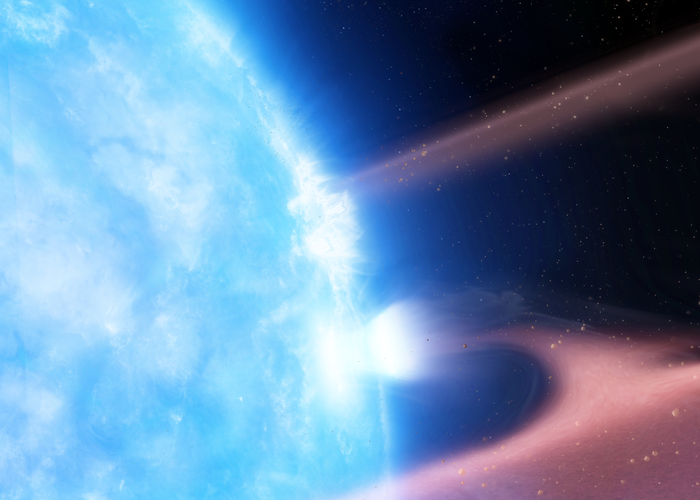Scientists watch destroyed planet being eaten by its own white dwarf star for the first time

Your support helps us to tell the story
From reproductive rights to climate change to Big Tech, The Independent is on the ground when the story is developing. Whether it's investigating the financials of Elon Musk's pro-Trump PAC or producing our latest documentary, 'The A Word', which shines a light on the American women fighting for reproductive rights, we know how important it is to parse out the facts from the messaging.
At such a critical moment in US history, we need reporters on the ground. Your donation allows us to keep sending journalists to speak to both sides of the story.
The Independent is trusted by Americans across the entire political spectrum. And unlike many other quality news outlets, we choose not to lock Americans out of our reporting and analysis with paywalls. We believe quality journalism should be available to everyone, paid for by those who can afford it.
Your support makes all the difference.Scientists have watched the last moments of a destroyed planet as it falls into a white dwarf for the first ever time.
Researchers used X-rays to track the remains of a dead planetary system as they were devoured by the star that they once orbited around.
Billions of years after the planetary system was formed, its star died, and the rocks and gas that were left behind dropped into the white dwarf that its sun left behind.
It is the first time that researchers have ever directly measured the rocky material as it falls onto a white dwarf. It also confirms decades of indirect evidence of the same effect, which has been seen in more than a thousand stars.
Most stars, when they have lived their live, will turn into white dwarves. Of the 300,000 such dead stars in our galaxy, many of them are thought to be eating the planets that once orbited around them.
Astronomers had indirect evidence of that behaviour, measuring the wavelengths of light to deduce that the material being eaten up shares characteristics with that of planets. But they have never spotted that behaviour directly – until now.
“We have finally seen material actually entering the star’s atmosphere. It is the first time we’ve been able to derive an accretion rate that doesn’t depend on detailed models of the white dwarf atmosphere. What’s quite remarkable is that it agrees extremely well with what’s been done before,” said Tim Cunningham of the University of Warwick Department of Physics.
“Previously, measurements of accretion rates have used spectroscopy and have been dependent on white dwarf models. These are numerical models that calculate how quickly an element sinks out of the atmosphere into the star, and that tells you how much is falling into the atmosphere as an accretion rate. You can then work backwards and work out how much of an element was in the parent body, whether a planet, moon or asteroid.”
A white dwarf is created when a star uses up its energy, throwing off its outer layers, likely destabilising the planets around it as it does. That leaves behind a very small, very dense dead star.
Material from the dead planets fall towards the white dwarf, and then slams into it. That creates a shock-heated plasma that settles on the surface and sends out X-rays as it cools down.
Those X-rays can be hard to see, since they are competing with much brighter sources in the night sky. In the new research, astronomers were able to pick them out using Chandra X-ray Observatory, which was able to isolate the signals from the white dwarf.
The research is described in an article, ‘A white dwarf accreting planetary material from X-ray observations’, published in Nature today.
Join our commenting forum
Join thought-provoking conversations, follow other Independent readers and see their replies
Comments